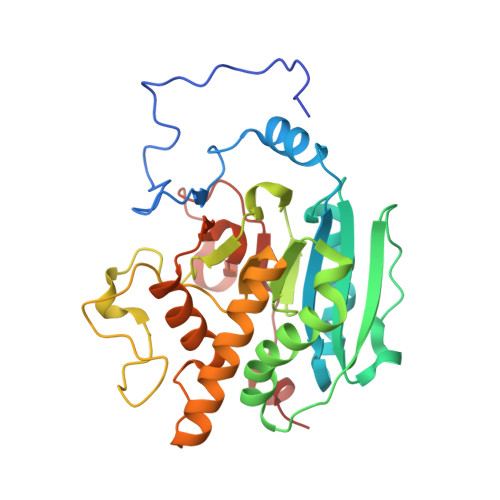Structures of a Human Blood Group Glycosyltransferase in Complex with a Photo-Activatable Udp-Gal Derivative Reveal Two Different Binding Conformations
Jorgensen, R., Batot, G., Mannerstedt, K., Imberty, A., Breton, C., Hindsgaul, O., Royant, A., Palcic, M.M.(2014) Acta Crystallogr Sect F Struct Biol Cryst Commun 70: 1015
- PubMed: 25084373
- DOI: https://doi.org/10.1107/S2053230X1401259X
- Primary Citation of Related Structures:
3ZGF, 3ZGG - PubMed Abstract:
Glycosyltransferases (GTs) catalyse the sequential addition of monosaccharides to specific acceptor molecules and play major roles in key biological processes. GTs are classified into two main families depending on the inverted or retained stereochemistry of the glycosidic bond formed during the reaction. While the mechanism of inverting enzymes is well characterized, the precise nature of retaining GTs is still a matter of much debate. In an attempt to clarify this issue, studies were initiated to identify reaction-intermediate states by using a crystallographic approach based on caged substrates. In this paper, two distinct structures of AA(Gly)B, a dual-specificity blood group synthase, are described in complex with a UDP-galactose derivative in which the O6'' atom is protected by a 2-nitrobenzyl group. The distinct conformations of the caged substrate in both structures of the enzyme illustrate the highly dynamic nature of its active site. An attempt was also made to photolyse the caged compound at low temperature, which unfortunately is not possible without damaging the uracil group as well. These results pave the way for kinetic crystallography experiments aiming at trapping and characterizing reaction-intermediate states in the mechanism of enzymatic glycosyl transfer.
Organizational Affiliation:
Department of Microbiology and Infection Control, Statens Serum Institut, 5 Artillerivej, DK-2300 Copenhagen S, Denmark.


















